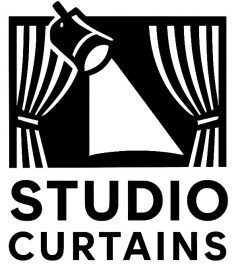1. What are studio curtains?
Studio curtains are specially designed, heavy-duty drapes made from thick, dense fabric. They’re used to absorb sound, reduce echo, and sometimes block light — helping create better acoustic environments for recording, performing, or working.
2. Do studio curtains block sound completely?
No. Studio curtains are not fully soundproof. They absorb and reduce sound reflections within a space, making it quieter and improving audio clarity. For full soundproofing, you’d need structural insulation (like double walls or mass-loaded vinyl).
3. What’s the difference between blackout curtains and acoustic curtains?
Blackout curtains block light and offer minimal sound absorption.
Acoustic curtains are thicker, denser, and designed specifically to absorb sound. Some curtains combine both features.
4. Where should I hang studio curtains?
Common placements include:
Over windows or bare walls
Behind recording equipment or vocal booths
Around corners or across room dividers
As backdrops in video setups
Anywhere sound reflects or enters/exits the room is a good place.
5. What material is best for acoustic curtains?
Look for:
Velour or velvet (theater-style, excellent absorption)
Heavy polyester blends (durable and effective)
Layered fabrics or blankets with a porous weave
High GSM (grams per square meter) = better performance. Aim for 500 GSM or higher.
6. Can I make my own studio curtains?
Yes! DIY curtains using moving blankets, heavy fabric, or layered materials can be very effective. Just make sure they’re dense, breathable, and properly mounted.
7. How do I hang them?
Use:
Ceiling tracks for full-wall coverage
Heavy-duty curtain rods for smaller areas
Industrial pipe or clamps for DIY setups
Always check weight ratings and leave an air gap behind the curtain for better absorption.
8. Will they work in home studios or just pro setups?
They work great in both. In fact, many home studios benefit the most, as they often have untreated walls, windows, or hard surfaces. Studio curtains are an affordable way to improve sound quickly.
9. How do I clean studio curtains?
Most acoustic curtains are spot-clean only or require professional dry cleaning due to their weight and materials. Always check the label. Avoid machine washing unless specifically stated.
Still Have Questions?
We’re happy to help! Contact us for personalized curtain recommendations, DIY support, or to request a custom quote.

